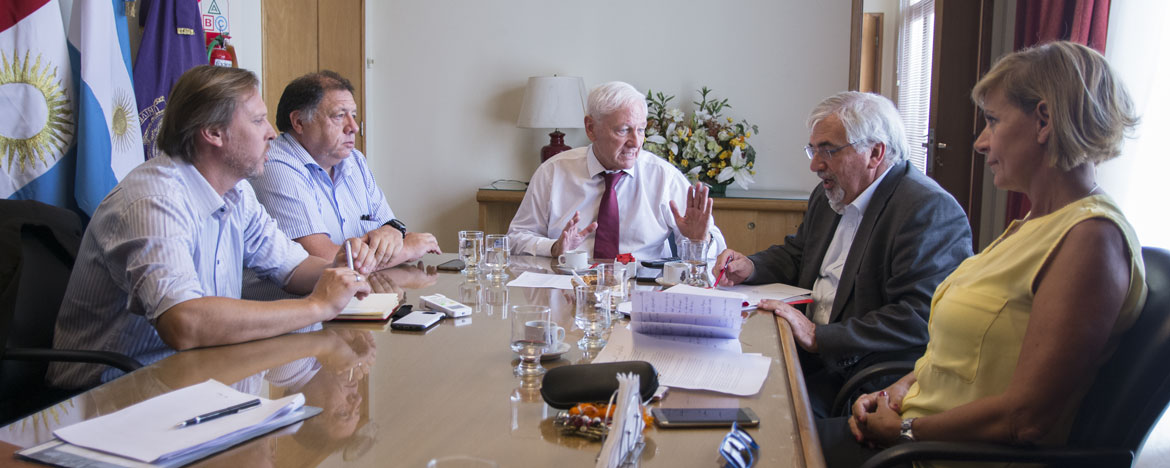UNC-UBA consortium moves forward to creating innovative degrees
UNC-UBA consortium moves forward to creating innovative degrees

UNC Rector Hugo Juri held last monday a work meeting with UBA Secretary of International Relations, Gabriel Capitelli, to advance towards the creation of short and innovative degrees in vacancy areas. [02.19.2018]
UNC-UBA consortium begins to take shape: the two largest universities in Argentina agreed in June 2017 to work together at undergraduate and research level.
In this occasion, Rector Juri sealed with his UBA peer, Alberto Barbieri, an unprecedented agreement in Argentinian higher education: “UBA-UNC Consortium on the Knowledge Society.”
On Monday, UNC Rector together with the Faculty of Agricultural Sciences Dean, Marcelo Conrero; the Faculty of Exact, Physical and Natural Sciences Dean, Pablo Recabarren; and the Virtual Campus Director, Cecilia Cravero, met with UBA International Relations Secretary, Gabriel Capitelli, to move forward in the creation of short and innovative degrees in vacancy areas.
The first series of three-year degrees will be connected to energy generation and biodiversity and four UNC faculties will be involved: Chemical Sciences; Math, Astronomy and Physics; Agricultural Sciences and Exact, Physical and Natural Sciences. These new courses will be taught both through face-to-face and blended classes by means of both universities´virtual campuses.
Figures
The magnitude of these national mega universities are evident if their numbers are taken into consideration: taken together, they have 450,000 students (more than 412,000 undergraduate students and almost 35,000 graduate students); 40,000 teaching positions; almost 200 undergraduate degrees and more than 660 graduate degrees, taught in 28 faculties.
Regarding research, they have 24,000 researchers and more than 100 research centers and institutes, as well as startups incubators & accelerators and technology transfer centers.
UBA and UNC have also 8 university hospitals, 1 blood products laboratory, two astronomical observatories, 7 high schools, 43 libraries, 31 museums, and a media conglomerate with 2 television channels, 2 radios (AM and FM) and a news portal.
The agreement subscribed in June, according to what is stated on the signed minutes, “... offers a platform of great complementarity to work jointly and collaboratively on some of the challenges that higher education faces within the framework of knowledge societies.”
Translation: Brenda Schauvinhold


